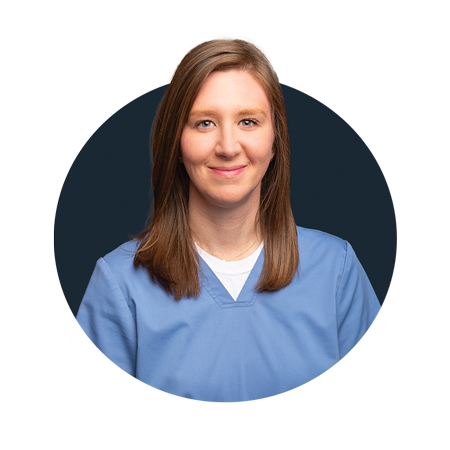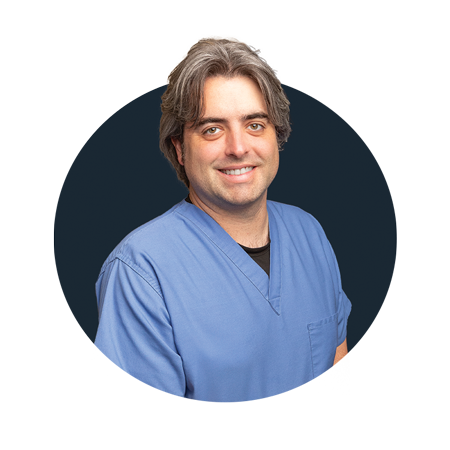Varicose Veins
Visible veins are often perceived in different
Visible veins are often perceived in different ways depending on individual preferences and concerns. For some, the presence of visible veins may be seen as a sign of being in good physical condition, while for others it might trigger feelings of self-consciousness or fear related to underlying health issues. Visible veins can become more pronounced as a person gets more in shape, with heightened muscle definition and reduction in subcutaneous fat contributing to their prominence. Factors such as fair skin or the natural aging process can also lead to increased visibility of veins. In most cases, when visible veins are a result of these natural changes and characteristics, they are considered to be healthy.
We’ve Got You Covered
Varicose veins are characterized by a twisty, ropey, or bulging appearance and they are usually quite visible under the skin.
While some people do not experience discomfort from these veins, others will experience an achy, itchy sensation or feelings of heaviness. Often this pain becomes more acute after long periods of being on your feet or from standing on hard surfaces.
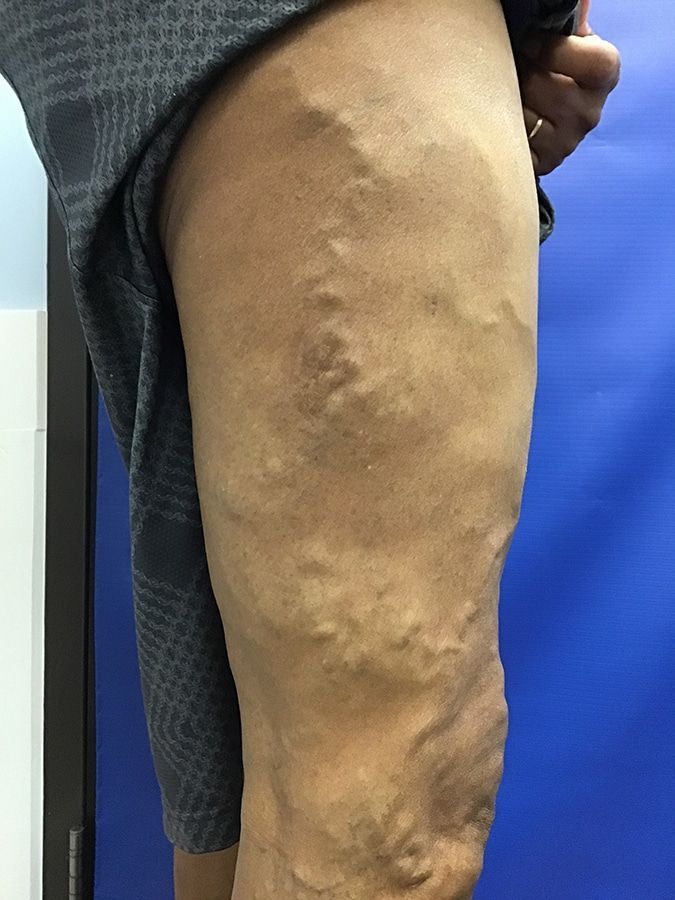
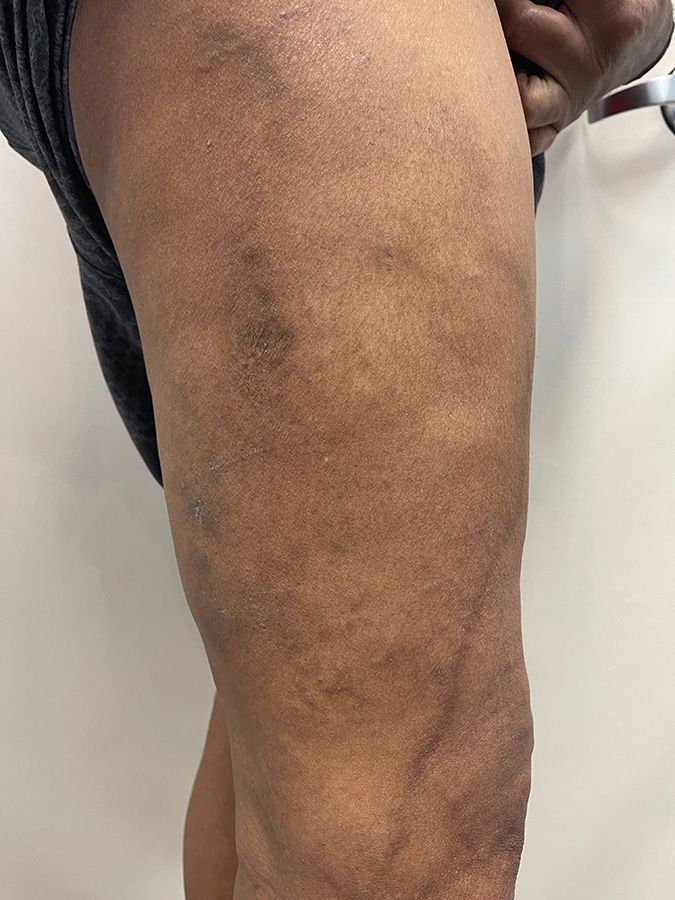
Common Questions
See some common questions and answers below, or call us at 706-850-3444
-
How can vulvar varicose veins be recognized and diagnosed?
Recognizing and diagnosing vulvar varicose veins involves a comprehensive evaluation to identify potential symptoms and physical signs. While a physical examination is often the first step, it is important to note that the absence of symptoms can make detection challenging. However, varicose veins in the vaginal or vulvar area are typically more noticeable when standing or squatting. Thus, paying attention to any discomfort or swelling in this region can help in the recognition process.
Some common symptoms to monitor for include genital pain or pressure, a sensation of heaviness, itchiness or burning, swelling, and discomfort during sexual intercourse (dyspareunia). These symptoms can raise suspicion of vulvar varicose veins, although they can also be indicative of other conditions. Therefore, a thorough evaluation by a medical professional is essential to make an accurate diagnosis.
In addition to a physical examination, transvaginal ultrasound is a valuable diagnostic tool that can provide detailed insight into the health of the affected veins. This imaging technique allows for a closer examination of the blood vessels in the vaginal and vulvar area, aiding in the visualization and identification of varicose veins.
Overall, a combination of careful symptom monitoring, physical examination, and imaging techniques such as transvaginal ultrasound can help in recognizing and diagnosing vulvar varicose veins. Seeking medical attention and discussing any concerns with a healthcare provider is crucial for accurate diagnosis and appropriate management of this condition.
-
How can visible veins be evaluated by a vein doctor?
Visible veins can be thoroughly evaluated by a qualified vein doctor, even if their visibility is occasionally compromised by vein disease. Our team of dedicated and certified vein specialists are well-equipped to conduct free evaluations at our esteemed vein clinics, conveniently located in Athens GA. We prioritize the assessment of visible veins to ensure accurate diagnosis and provide optimal care for all our patients.
-
What are the common symptoms of vein disease that may be paired with visible veins?
Vein disease is often accompanied by visible veins on the body. If you are wondering whether your visible veins are harmless or indicative of underlying vein disease, here are some common symptoms to watch out for:
1. Discoloration: Look out for new darker red or purple patches on your skin. This could be a potential sign of Deep Vein Thrombosis.
2. Swelling of the legs: If you experience leg swelling, it may be a sign of poor circulation or weakened vein walls and valves.
3. Pain or discomfort: Any form of pain associated with your veins should not be ignored. Itching, burning, cramping, restless legs, or tingling sensations can all indicate issues related to vein disease.
4. Bulging, twisted veins: Varicose veins, which appear as bulging and twisted veins on the skin's surface, are often linked to vein disease. Additionally, having varicose veins may increase your risk of developing blood clots.
5. Formation of ulcers or open wounds: Extremely weak circulation or pooling of blood due to damaged or backward-flowing vein valves can lead to the development of ulcers or open wounds.
If you notice any of these symptoms alongside your visible veins, it may be advisable to consult a board-certified vein doctor for further evaluation and appropriate treatment.
-
What are some possible reasons for the visibility of blue, green, or purple veins??
There are several factors that could contribute to the visibility of blue, green, or purple veins.
One possible reason is the thickness of the skin. In some cases, veins may be more noticeable due to a thinner layer of skin covering them, making them more visible to the naked eye. Additionally, the fairness of an individual's skin tone can also play a role in the visibility of veins. Lighter skin tones may allow veins to be more apparent, while darker skin tones may mask their visibility.
It is important to note that the colors of veins can also be influenced by other factors such as underlying health conditions or certain medications.
-
What factors contribute to the development of vein disease?
The development of vein disease can be influenced by various factors. Firstly, age plays a crucial role, as veins tend to lose their elasticity and become less efficient in transporting blood as individuals get older. Additionally, genetic predisposition can greatly contribute to the susceptibility of developing vein disease, as certain inherited traits may make an individual more prone to weak or damaged veins.
Family history also plays a significant role, as individuals with close relatives who have experienced vein disease or related conditions are more likely to develop similar issues themselves. Moreover, prolonged periods of standing or sitting can negatively impact vein health. When someone remains in one position for extended periods, such as in sedentary office jobs, the lack of movement puts increased pressure on the veins, impeding blood flow and potentially leading to vein disease.
In summary, the development of vein disease results from a combination of factors including age, genetic predisposition, family history, and prolonged periods of standing or sitting. Understanding and addressing these factors can play a crucial role in maintaining healthy veins.
-
How do bodily changes, such as aging and body fat, affect the visibility of veins?
As our bodies age, certain changes occur that can affect the visibility of our veins. One of the main factors is the loss of elasticity in our skin. As we get older, our skin becomes less able to stretch and spring back into place, which can lead to wrinkles and sagging. This can also cause a thinning of the skin, particularly in areas where veins are located, making them more visible.
In addition to aging, the amount of body fat we carry can play a role in vein visibility. The less body fat a person has, the easier it might be to see their veins without the aid of medical equipment such as ultrasounds or vein lights. This is because a leaner body has less fat tissue surrounding the veins, allowing them to be more prominent.
It is important to consider that individual factors such as the structure of one's skin, age, and weight can have varying effects on the visibility of veins. Some individuals may have perfectly harmless and non-concerning visible veins due to these factors. It is worth noting that visible veins are not necessarily a cause for concern on their own, but any sudden or significant changes in vein appearance should be evaluated by a healthcare professional.
From begining to end everyone was so polite and professional. It seemed as if everyone loved their job. Dr. Chris Malone was patient in explaining everything to me regarding vein disease and treatment options.
Rene W.

"I called Athens Vein to get a second opinion after I was unsure about the procedure another place was going to do. They answered my questions and I scheduled an appointment. I had the varicose vein ablation procedure done today and everything went very smooth and easy. The staff are very patient and answered all of my questions."
P & M
“The office staff was professional and everything was scheduled quickly and efficiently. The billing staff handled everything concerning my insurance very well. I would recommend Dr. Malone and his staff to anyone and have recommended them to family”.
Jarrod R.
"I came to Dr. Malone's office to find relief from pain in my legs and had a great experience here. The staff was friendly, efficient and helpful and Dr. Malone took a lot of time to speak with me and answer questions. I highly recommend this practice!"
Daniella A.
From begining to end everyone was so polite and professional. It seemed as if everyone loved their job. Dr. Chris Malone was patient in explaining everything to me regarding vein disease and treatment options.
Rene W.
"I called Athens Vein to get a second opinion after I was unsure about the procedure another place was going to do. They answered my questions and I scheduled an appointment. I had the varicose vein ablation procedure done today and everything went very smooth and easy. The staff are very patient and answered all of my questions."
P & M
Insurance Made Easier
We work with most of the major insurance carriers, including Medicare and Medicaid.
Our patients often find treatment of vein disease is typically covered by their insurance plans.
Meet Your
Care Team
There are other vein clinics, but few are like
Athens Vein & Aesthetics.
Every member of the staff at Athens Vein & Aesthetics wants you to be healthy, happy, confident, and ultimately delighted with your results and appearance.
-
Chris E. Malone
ButtonMD, FACS
-
Meredith Barrett
ButtonMedical Assistant / Marketing Coordinator
-
Kelley Gamboa
ButtonRN, BSN
-
Penny Malone
ButtonPractice Administrator
-
Andrew Murphy
ButtonAssistant Practice Administrator
-
Edwina Taylor
ButtonRDCS, RVT
-
Tabatha Thomson
ButtonClerical Manager
-
Claire Hauf
ButtonMedical Assistant
-
Avery Callaway
ButtonLicensed Medical Esthetician
-
Jenny Gibson
ButtonRN, BSN
-
Megan White
ButtonFront Office Specialist
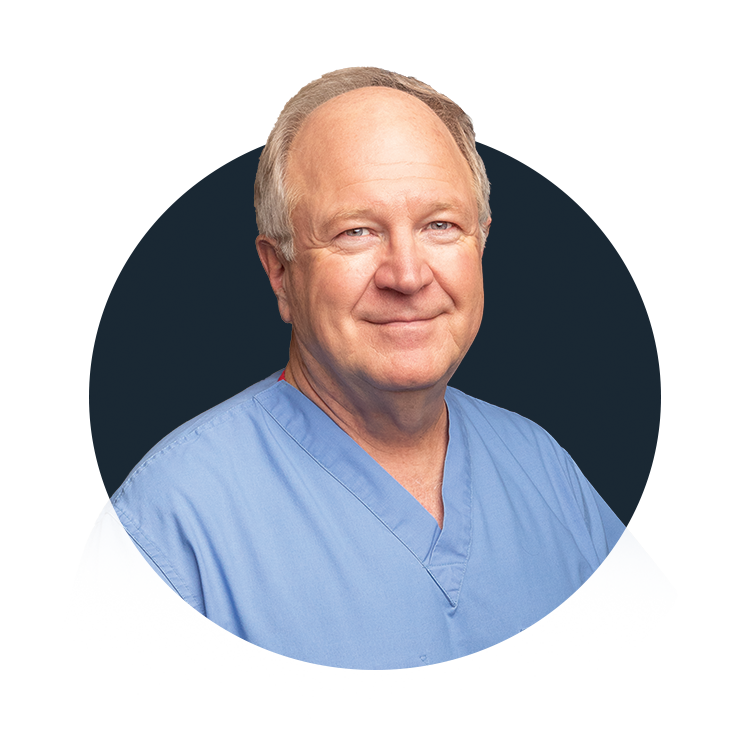
“Varicose veins are most often seen in the legs due to poor circulation and the effects of walking or standing; however, varicosities can occur in any vein throughout the body.”
Dr. Chris Malone
We're Here
To Help You
-
Varicose Veins
Learn MoreAny vein may become varicose, but the veins most commonly affected are those in your legs and feet.
-
Facial Veins
Learn MoreSpider veins and broken capillaries may appear anywhere on the face, typically around the nose or under the eyes.
-
Spider Veins
Learn MoreSpider veins are found closer to the skin’s surface and are often red or blue.
-
Chronic Venous Insufficiency
Learn MoreOccurs when the leg veins do not allow blood to travel back to the heart.
-
Deep Vein Thrombosis
Learn MoreOccurs when a blood clot forms in one or more of the deep veins in your body, usually in your legs
-
Venous Stasis Ulcers
Learn MoreWounds that are thought to occur due to improper functioning of venous valves, usually of the legs.
-
Lymphedema
Learn MoreLymphedema occurs when the lymph system is damaged or blocked.
-
Vulvar Veins
Learn MoreUsually caused by pregnancy and occur in approximately 10% of pregnant women.
-
Hand Veins
Learn MoreLarge bulging veins on the back of our hands occur with age as our skin relaxes and thins.
-
Restless Leg Syndrome
Learn MoreA disorder of the peripheral nervous system that causes an urge to move the legs.
Varicose And Spider Vein Treatments Are Effective And Most Are Covered By Insurance.
Primary Care vs Vein Specialist
Primary care physician possesses a broad knowledge base that covers a range of ailments and diseases. While they can diagnose vein disease correctly, they may not have the same level of expertise in this specific area.
Therefore, if you suspect that you may be suffering from vein disease, it is often more prudent to seek the guidance of a vein treatment specialist directly. By doing so, you increase the chances of receiving an accurate diagnosis and appropriate treatment without the risk of being misdiagnosed or experiencing delayed care. Ultimately, a vein treatment specialist's specialized focus and expertise make them the ideal choice for addressing vein diseases comprehensively and effectively.
What should be done if veins are bulging in the legs or if there is sudden discomfort or pain?
If you notice bulging veins in your legs or are experiencing sudden discomfort or pain, it is important to seek assistance from vein specialists.
1181 Langford Drive
Bldg. 300, Suite 104
Watkinsville, GA 30677
Phone: (706) 850-3444
Fax: (706) 850-3448

